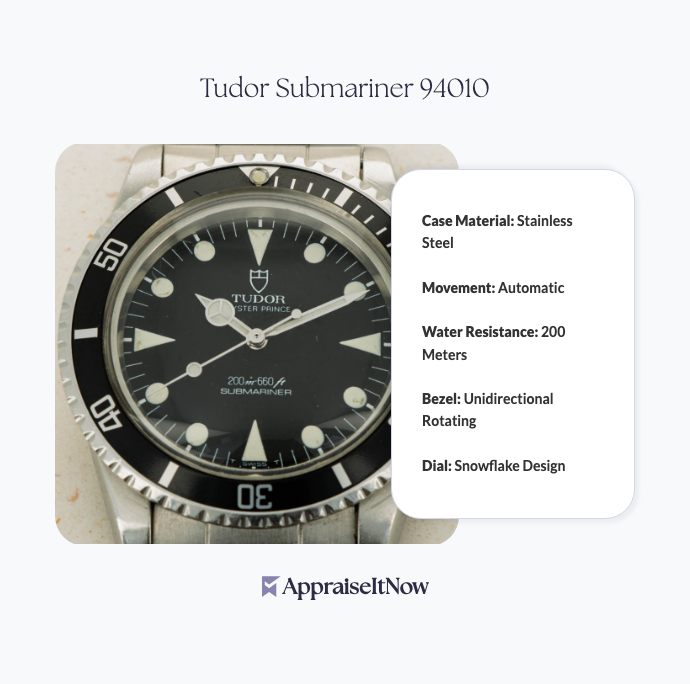<h1>How to Get Your Gilbert Clock Regulator Appraised</h1>
<p>The <strong>Gilbert Clock Regulator</strong> stands as a timeless piece of American craftsmanship, representing over a century of horological excellence from the <strong>Gilbert Clock Company</strong>, founded in 1828. Whether you've inherited one of these sought-after antique clocks or discovered one at an estate sale, understanding how to properly appraise your Gilbert regulator ensures you know its true market value for insurance, sale, or collection purposes. Current market estimates place these clocks between <strong>$500 and $800</strong>, though individual pieces can vary significantly based on condition, age, and unique characteristics.</p>
<h2>Understanding Your Gilbert Clock Regulator's Value Drivers</h2>
<p>The value of a Gilbert Clock Regulator depends on several interconnected factors that professional appraisers evaluate carefully. These regulators were primarily manufactured for use in offices, schools, and public buildings, where their reliable performance and accurate timekeeping made them indispensable. Today, collectors prize them for their sturdy construction, intricate brass movements, and ornate wooden cases that showcase the craftsmanship of their era.</p>
<p>Your specific clock's worth hinges on its <strong>condition, age, originality, and working mechanism</strong>. A fully functional regulator with original components in pristine condition commands premium pricing, while pieces requiring restoration may settle toward the lower end of the valuation spectrum. The distinctive aesthetic appeal of Gilbert regulators—featuring both mechanical precision and visual elegance—makes them increasingly desirable among antique <a href="/types/memorabilia-and-collectibles">memorabilia and collectibles</a> enthusiasts.</p>
<div class="callout tip"><p><strong>Valuation Insight</strong></p>
<p>Matching serial numbers, original dials, and verified Gilbert Company markings can increase your regulator's value by 15-25% compared to unmarked or modified examples.</p></div>
<h2>Dating Your Gilbert Clock Regulator</h2>
<p>When collectors ask "How do you date a regulator clock?" the answer lies in examining specific manufacturing details unique to Gilbert's production timeline. The <strong>Gilbert Clock Company's output spans from 1828 through the 20th century</strong>, with different eras producing distinct styles and mechanisms. Understanding when your regulator was made provides essential context for appraisal professionals assessing its historical significance and rarity.</p>
<p>Key dating indicators include the style of the wooden case (early Victorian through Art Deco influences), the design of the brass movement, dial construction, and any company stamps or serial numbers. Regulators with documented production dates from the 19th century typically command higher valuations than early 20th-century examples, though exceptional examples from any period can achieve strong market prices. Professional appraisers use detailed manufacturing records and design references to pinpoint production dates with remarkable accuracy, helping establish authenticity and appropriate market positioning.</p>
<p>The distinction between a regulator clock and standard household timepieces matters significantly for valuation. When asking "What are regulator clocks called?" the answer reveals their specialized purpose—these precision instruments were designed as accurate timekeeping standards, commanding respect and premium pricing within the collector community. Unlike casual decorative clocks, regulators represent serious horological investment pieces.</p>
<h2>Condition Assessment and Market Positioning</h2>
<p>Evaluating how much your clock is worth requires honest assessment of its current condition. A Gilbert Clock Regulator in excellent working order with original finish intact positions itself at the premium end of the $500-$800 range, while clocks requiring cleaning, repair, or restoration will appraise toward the middle or lower spectrum. The beauty of these antique clocks lies in their durability—many regulators manufactured over 150 years ago still keep accurate time when properly maintained.</p>
<p>When determining your clock's condition, consider whether it requires winding regularly (a feature of mechanical regulators that appeals to dedicated collectors), or if the mechanism needs attention. A clock that runs smoothly and maintains accurate time demonstrates mechanical integrity that significantly enhances its appraisal value. Conversely, mechanisms with damaged components, missing weights, or broken escapements require factoring restoration costs into the valuation equation.</p>
<div class="callout note"><p><strong>Condition Matters</strong></p>
<p>Original painted or stained finishes, even with age patina, often appraise higher than refinished examples among serious collectors who value authenticity.</p></div>
<h2>Building Documentation for Your Appraisal</h2>
<p>Professional appraisers evaluating your Gilbert Clock Regulator benefit significantly from comprehensive documentation you can provide. Start by photographing your clock from multiple angles—the front face, side profile, back panel, and any visible maker's marks or serial numbers. Detailed images of the dial, hands, case construction, and internal movement (if accessible) help appraisers conduct thorough remote evaluations and comparative analysis.</p>
<p>Compile any historical information accompanying your clock—previous ownership records, auction documentation, family provenance, or repair receipts all contribute to establishing authenticity and value. If you possess the original key for winding the mechanism, include photos of this accessory, as complete original hardware adds measurable value. Measurements of height, width, and depth provide appraisers with dimensional reference essential for identifying specific model variations within the Gilbert catalog.</p>
<p>When seeking appraisal services through platforms like AppraiseItNow, this documentation streamlines the evaluation process. You'll submit your photographs and descriptions securely online, allowing credentialed experts across the U.S.—including <strong>AAA, ISA, ASA, CAGA, and AMEA certified appraisers</strong>—to assess your regulator's value and provide detailed, USPAP-compliant reports suitable for insurance, estate planning, or sale purposes.</p>
<h2>Why Professional Appraisers Matter for Antique Clocks</h2>
<p>Getting a professional clock appraisal goes beyond simple market research. Certified appraisers bring specialized knowledge of Gilbert Clock Company production methods, materials evolution, and market dynamics that individual collectors may miss. They distinguish between reproduction regulators and authentic period pieces, identify valuable variants within the Gilbert product line, and evaluate mechanical functionality with technical expertise.</p>
<p>Whether you're asking "How much is an old clock worth?" or "Are old clocks worth any money?", the answer typically depends on brand recognition, condition, and rarity. Gilbert regulators specifically benefit from strong collector demand and documented manufacturing history, positioning them favorably within the antique timepiece market. Professional appraisers understand these nuances and can explain why your particular clock commands its specific valuation, whether for insurance purposes or private sale consideration.</p>
<p>For those wondering "Is 50 years old an antique or vintage?", understanding these definitions helps position your clock appropriately. Regulators manufactured in the 1970s or earlier qualify as antique, while those from the 1980s-1990s fall into the vintage category. Both categories can hold significant value, though genuine antique Gilbert regulators typically command premium pricing due to their established collectibility and historical significance.</p>
<h2>Finding the Right Appraiser for Your Gilbert Regulator</h2>
<p>The question "How to get a clock valued?" requires identifying appraisers with specific expertise in antique timekeeping instruments. Not all general antique appraisers possess the technical knowledge to properly evaluate clock mechanisms, assess original versus replacement components, or understand the nuanced market factors affecting regulator values. Specialized appraisers with horological training can identify subtle variations between Gilbert models and authenticate features that casual evaluators might overlook.</p>
<p>AppraiseItNow connects you with credentialed professionals experienced in <a href="/types/antiques">antique</a> <a href="/types/household-goods">household goods</a> and <a href="/types/personal-property">personal property</a> appraisals, including specialized antique clock evaluation. Our network includes appraisers who understand Gilbert Clock Company's manufacturing history, can verify authenticity through detailed mechanical inspection, and provide market-based valuations reflecting current collector demand. The convenience of submitting photographs and documentation online means you receive expert assessment without requiring travel or extended appointments.</p>
<p>When selecting an appraiser, verify their credentials with established organizations like the <strong>American Society of Appraisers (ASA)</strong> or <strong>International Society of Appraisers (ISA)</strong>. These certifications indicate professionals who maintain strict ethical standards, continue education in their specialty areas, and follow USPAP (Uniform Standards of Professional Appraisal Practice) guidelines ensuring reports hold weight in legal, financial, and insurance contexts.</p>
<h2>Market Trends and Investment Considerations</h2>
<p>Understanding current market dynamics helps position your Gilbert Clock Regulator appropriately. The antique clock market has experienced renewed collector interest in recent years, driven partly by a cultural appreciation for mechanical timepieces and away from digital dependency. Gilbert regulators specifically benefit from their reputation as reliable, attractive, and historically significant American-made products—factors that support stable valuations and appreciation potential.</p>
<p>When considering "Where can I sell my clock?" or whether "There's a market for old clocks?", the answer is decidedly yes. Online auction platforms, antique dealers specializing in timepieces, regional antique shops, and collector networks all provide potential venues for selling quality regulators. Understanding your clock's specific value through professional appraisal helps you price it competitively and connect with serious buyers who recognize its worth.</p>
<p>The frequency of winding your Gilbert regulator—typically weekly or monthly depending on the specific model—appeals to collectors who appreciate mechanical engagement with their timepieces. This functional aspect differentiates regulators from purely decorative clocks and attracts dedicated horological enthusiasts willing to pay premium prices for working examples. Learning "How often do you have to wind a regulator clock?" during the appraisal process helps frame your clock's appeals to potential buyers or insurance valuators.</p>
<div class="callout tip"><p><strong>Market Insight</strong></p>
<p>Gilbert regulators with documented provenance or unusual case materials (walnut, oak, or mahogany variations) often command 20-30% premiums over standard examples in comparable condition.</p></div>
<h2>Understanding the Difference Between Regulators and Other Clocks</h2>
<p>Professional appraisers frequently address the question "What is the difference between a clock and a regulator?" since this distinction directly impacts valuation. Regulator clocks were manufactured specifically as precision timekeeping instruments with mechanisms designed for accuracy rather than rapid production. They typically feature more refined movements, escapements optimized for performance, and cases crafted to minimize temperature and humidity fluctuations that affect accuracy.</p>
<p>Your Gilbert regulator's distinction from ordinary household clocks explains why it commands premium pricing. The investment in precision manufacturing, quality materials, and mechanical refinement positions regulators as horological instruments rather than mere decorative timepieces. When seeking "How do I find out how much my clock is worth?", understanding this categorization helps appraisers justify valuations and explains why Gilbert regulators maintain strong collector appeal and stable market values across economic cycles.</p>
<h2>Key Takeaway</h2>
<div class="callout note"><p><strong>Key Takeaway</strong></p>
<p>A certified appraisal of your Gilbert Clock Regulator provides authoritative documentation of its value, authenticity, and condition, whether you're seeking insurance coverage, planning an estate distribution, or considering a sale. Professional appraisers bring specialized knowledge of Gilbert's manufacturing history, market dynamics, and mechanical assessment expertise that ensures accurate valuation reflecting your regulator's true worth in today's collector market.</p></div>







.avif)







